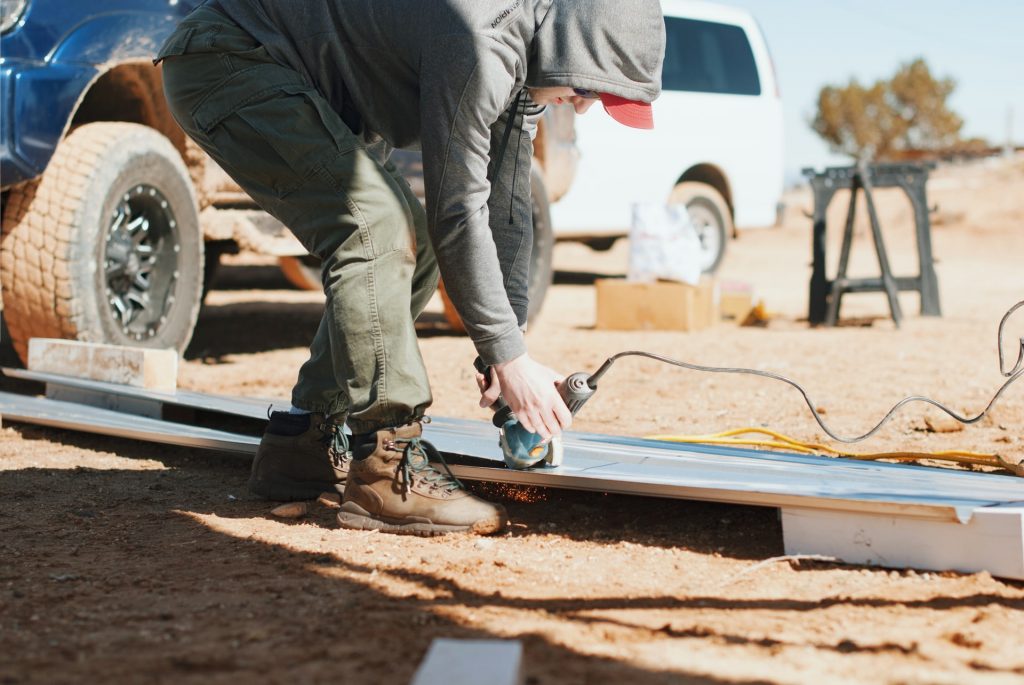Are you confused about how to cut a crown molding with your circular saw? If yes, you’re in the right place.
Usually, the molding that is installed inside a modern home can be cut with a circular saw.
Though it is not the only way to cut molding, it’s a good option if you have no other saw. Circular saws are easy to use, inexpensive, and produce an attractive finish.
Read this guide to find out how you can do this in just a few quick and easy steps.
Quick Summary
In this post, we will go over:
- How to cut crown molding with a circular saw?
- How to install crown molding?
Let’s get started.
How to Cut Crown Molding with a Circular Saw?
Step 1
The first step is to create a steady work area where you will cut the molding. All you need to do is nail a sturdy plank between two sawhorses and you’re good to move on to the second step.
Step 2
Before you start to cut, test the saw to make sure it’s working properly. The blade should be properly installed and the teeth should be sharp. Do not continue with the project if your blade is dull.
We recommend a fine-tooth cross-cut blade. However, a well-made, general-purpose, carbide-tipped blade will also be just fine.
Step 3
Adjust the depth of the circular saw blade. It should only be slightly greater than the thickness of the molding.
Step 4
Next, use a carpenter’s pencil to mark all the cuts on the back of the molding.
Most people skip this step. But, we think it is important for crispier cuts. This is when the teeth pass through the backside of the board, it shows less wear and tear on the face of the wood.
Step 5
Now’s the time to splice all the pieces of the moldings. To do this, adjust the circular saw to a 45-degree angle and cut each piece with the help of a carpenter square and the saw. Also, make sure that the two 45 degree cuts fit in a complementary way.
To see if they fit properly, we suggest you make the first cut with an entire piece of molding positioned in a way that it’s faced down and extended to your left side.
Then, move on to the second piece. This time, the molding has to be face down but positioned to your right side. Moreover, for cuts like these, you don’t have to alter the angle of the blade or turn the workpiece over.
Step 6
Now you can start to cut the molding for the inside corner.
To do this, place the saw blade at 45 degrees. Then, position the first piece of the molding on the work surface. You need to make sure it’s backside up and positioned to the left.
Now carefully cut the piece from its back extending to the left. This will be the right edge of the length of the molding. It will fit on the left side of the inside corner.
Step 7
Make your way to the other side of the sawhorse and extend the entire piece of molding to your left side.
In reality, this piece is extended in the opposite direction because you stepped to the other side of the sawhorse. With your circular saw, carefully make the cut near the edge of the board. We suggest you use a carpenter square as a guide.
It’s crucial to move to the other side of the sawhorse so you can push the saw in the opposite direction. This way the angle of the blade won’t change.
Moreover, this piece of molding is supposed to go to the right side of the inside corner. The 45-degree angle needs to fit right into the corner.
Step 8
Lastly, trim the corner piece for a miter joint on the outside corner. This step is similar to step number 6. The only difference is that you need to place the board top side up to get the cut you want.
However, this also means that you’ll have to show extra care as you cut the face of the board. You do not want to tear the edge of the board.
How to Make Coped Joints in Molding?

In this section of the article, we will discuss how to create a coped joint with a circular saw.
If you’re unfamiliar, it’s basically a standard alternative to a basic mitered joint where the two molding trims are cut at 45-degrees to fit in an inside corner.
Step 1
With the circular saw, cut a 90-degree cut in the first piece of the molding.
Make sure that it’s a perfect 90-degree cut so it can fit tightly in the corner, connecting to the adjacent wall. Then, nail the molding to the wall with a hammer or a nail gun.
Step 2
Now, measure the wall for the piece you want to create a coped joint from. It would be best if you measure all the way to the adjacent wall where you placed the 90-degree piece. However, do not measure the face of the 90-degree piece.
Cut the pieces to the length that you measured. Each end should have a 45-degree cut using a circular saw or a miter box.
Step 3
Keep the molding piece face up on a flat surface so the edge hangs off. Then, use your circular saw to cut along the side of the molding while you follow the line of the miter cut.
We suggest that you hold the saw at a 30 or 45-degree angle so you get a crisp angle that follows the molding contours.
Step 4
Finally, align the coped piece against the wall. The edge of the piece should butt against the face of the molding that you installed earlier.
Check the joint closely. If you find any gaps, you can fine-tune them with sandpaper or a file.
Wrapping Things Up…
There you have it. Now you know how to cut crown molding with a circular saw as well as make a coped joint.
Although the process is straightforward, there are still some risks when it comes to power tools like circular saws.
Practice safety while you handle the circular saw. Moreover, if you’re a beginner and don’t have enough knowledge, you can always contact a professional to get the job done.
You can also check our page for more information and guidance.

